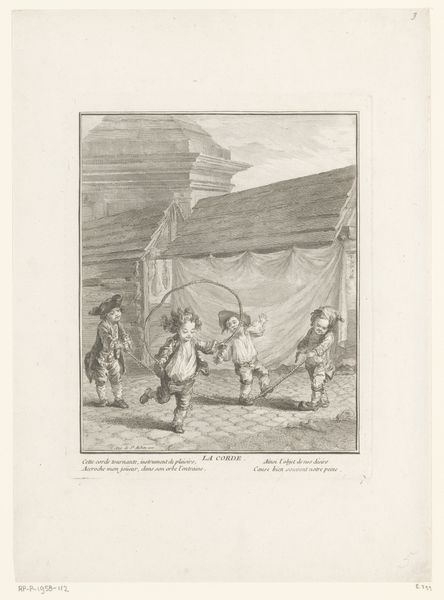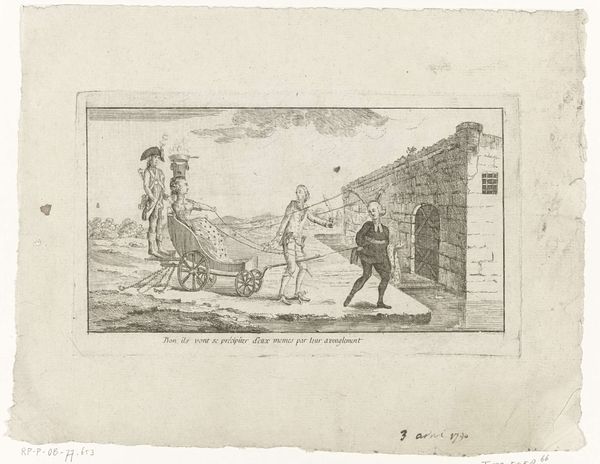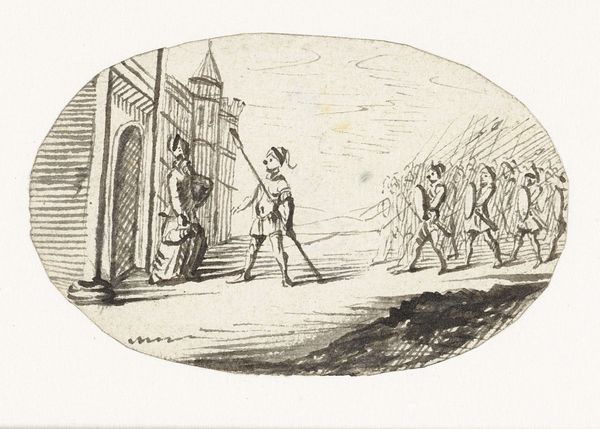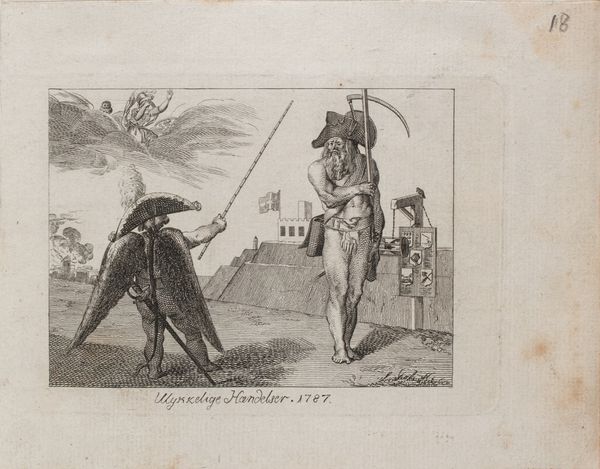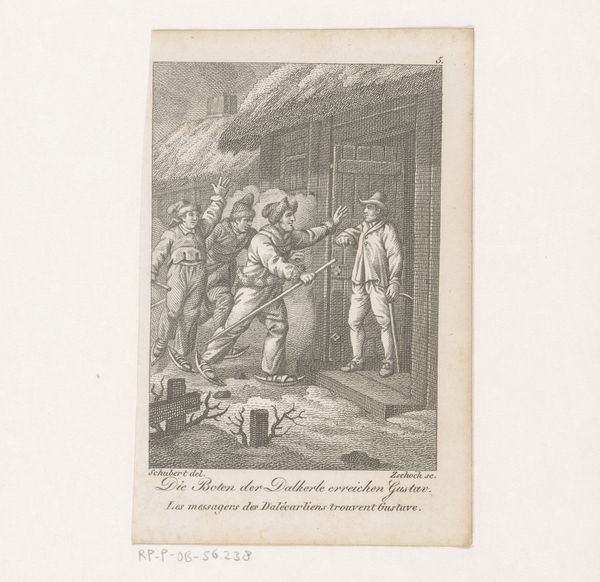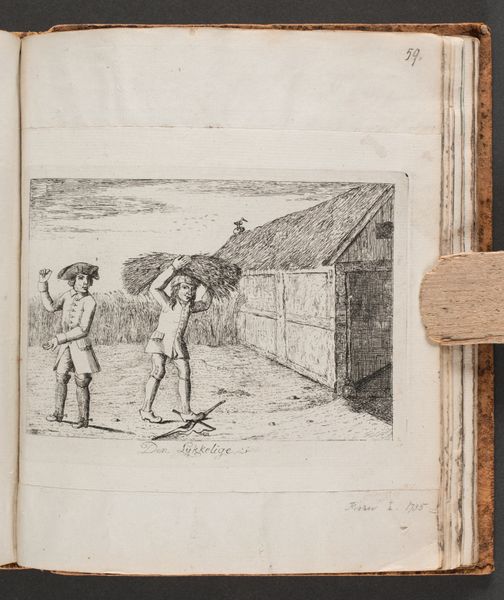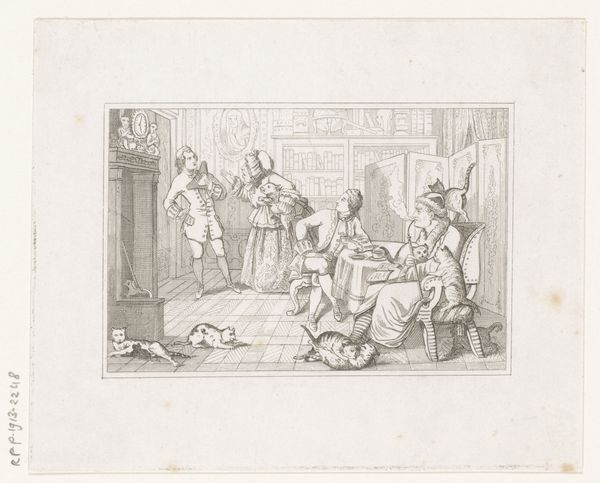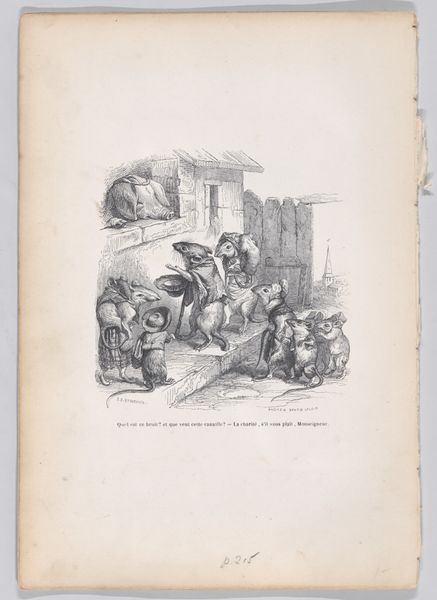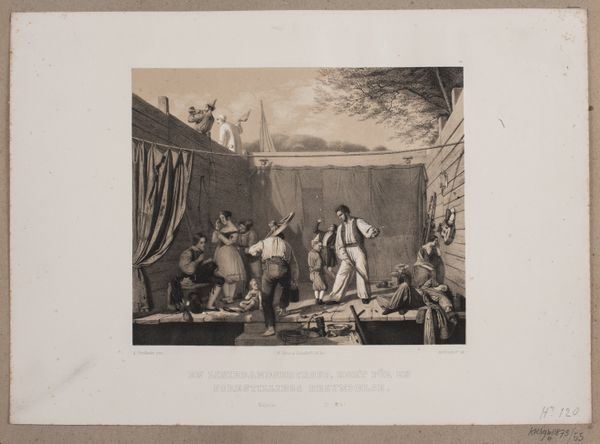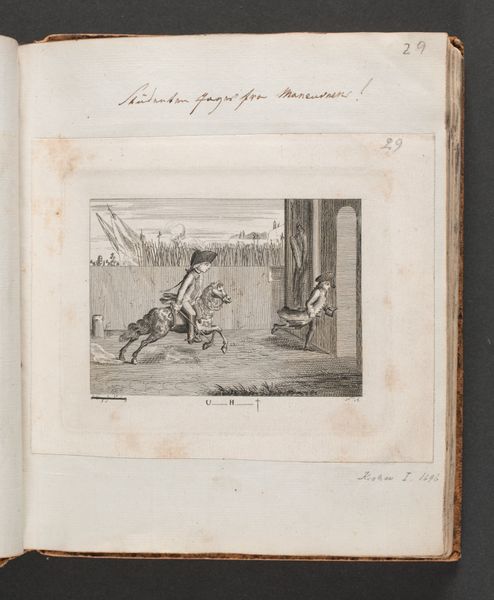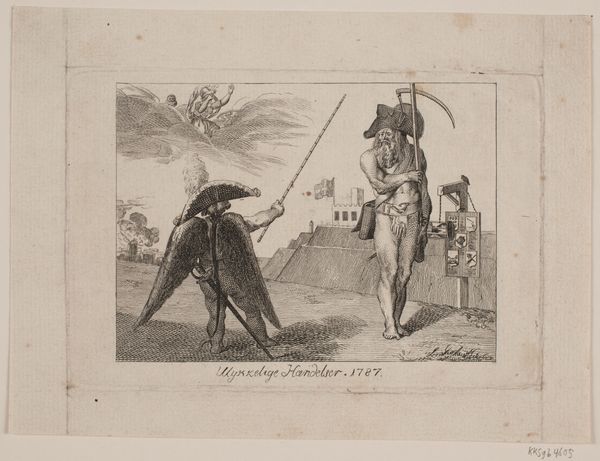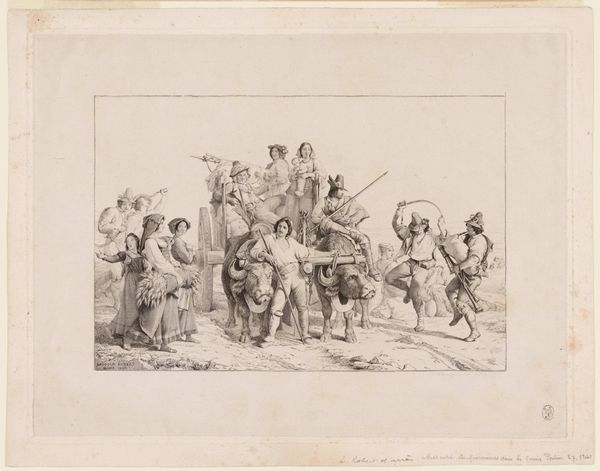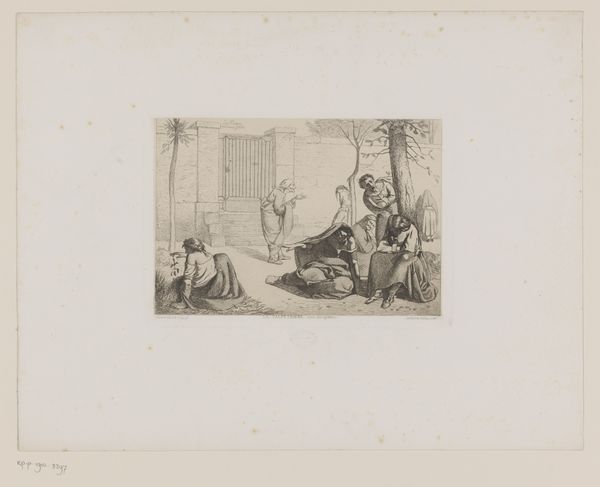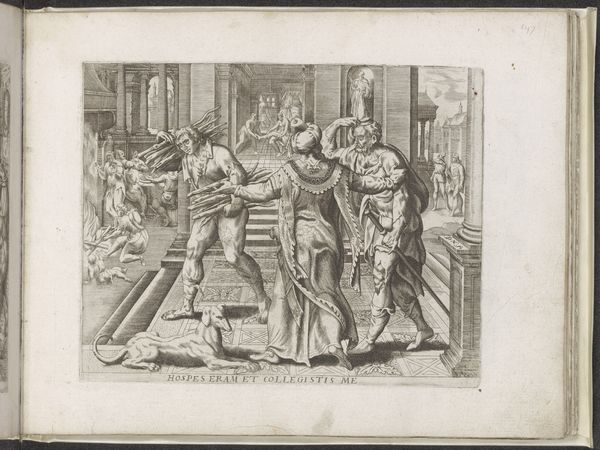
Dimensions: 112 mm (height) x 142 mm (width) (plademaal)
Curator: I see panic and awkwardness distilled into ink on paper. It’s strangely compelling. Editor: We're looking at "Ulykkelige hændelser nr. 6" or "Unhappy Events No. 6," an etching, engraving, and drawing by Georg Christian Schule, created around 1787. The artwork resides at the SMK, the National Gallery of Denmark. I find Schule's satirical rendering here very evocative. What's catching your eye? Curator: The theatrical quality is strong. It's like a snapshot from a badly directed play, the figures caught mid-escape, one on a ridiculously small horse, the other nearly colliding with that classical doorway. I immediately interpret this piece through a queer lens. It whispers of repressed desire and anxieties around masculine performance, no? Editor: Absolutely, considering the societal structures in late 18th-century Europe. Schule’s use of caricature here seems very pointed. This wasn't just idle jesting, but a visual commentary. Consider how power dynamics were reflected and reinforced. Curator: The setting is curious—part idyllic countryside, part imposing architecture. It's a world where social expectations literally box you in. And the fleeing figure seems eager to uphold that status quo, doesn't he? Even at the expense of looking utterly absurd. It is hard to deny its queer undercurrents: this piece becomes especially intriguing if one reads it through a lens informed by critical race theory, thinking of visibility as a social construct. Editor: Or perhaps Schule seeks to depict not merely physical escape, but escape from a system designed for repression. The use of line work, particularly the frenzied etching in the background, only intensifies that emotional landscape. It becomes clear the piece may seek to use Romantic artistic tools and strategies, yet mockingly. The artist walks a thin line between two worlds. Curator: Thinking about it now, its lack of clean lines might have been to make the figures not easily defined as to reinforce their othered identities. I find myself pondering the potential interpretations even more deeply. Editor: Exactly. Schule is making us work, isn't he? And in that labor of interpretation, maybe we catch a glimpse of our own biases, too. Curator: A glimpse indeed. It appears this little etching has plenty to teach us about ourselves. Editor: Well said!
Comments
No comments
Be the first to comment and join the conversation on the ultimate creative platform.
